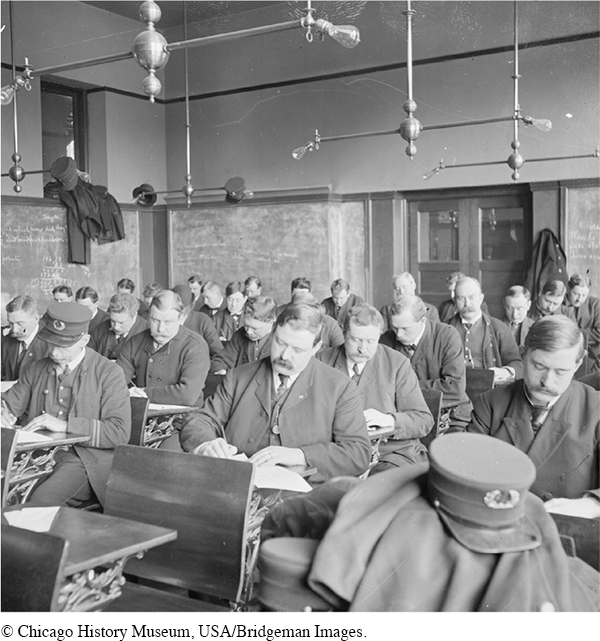The American Promise: Printed Page 517
The American Promise, Value Edition: Printed Page 472
The American Promise: A Concise History: Printed Page 538
Corruption and Party Strife
The political corruption and party factionalism that characterized the administration of Ulysses S. Grant (1869–

A small but determined group of reformers championed a new ethics that would preclude politicians from getting rich from public office. The selection of U.S. senators particularly concerned them. Under the Constitution, senators were selected by state legislatures, not directly elected by the voters. Powerful business interests often contrived to control state legislatures and through them U.S. senators. As journalist Henry Demarest Lloyd quipped, Standard Oil “had done everything to the Pennsylvania legislature except to refine it.” In this climate, a constitutional amendment calling for the direct election of senators faced stiff opposition from entrenched interests.
The American Promise: Printed Page 517
The American Promise, Value Edition: Printed Page 472
The American Promise: A Concise History: Printed Page 538
Page 518Republican president Rutherford B. Hayes tried to steer a middle course between spoilsmen and reformers. Hayes proved a hardworking, well-
Foremost among the Republican Senate bosses stood Roscoe Conkling of New York. He and his followers, who fiercely supported the patronage system, were known as “Stalwarts.” Conkling’s rival, Senator James G. Blaine of Maine, led the “Half Breeds,” who were less openly corrupt yet still tainted by their involvement in the Crédit Mobilier scandal. A third group, called the “Mugwumps,” consisted of reformers from Massachusetts and New York who deplored the spoils system and advocated civil service reform.
President Hayes’s middle course pleased no one, and he soon managed to alienate all factions of his party. Few were surprised when he announced that he would not seek reelection in 1880. To avoid choosing among its factions, the Republican Party in 1880 nominated a dark-